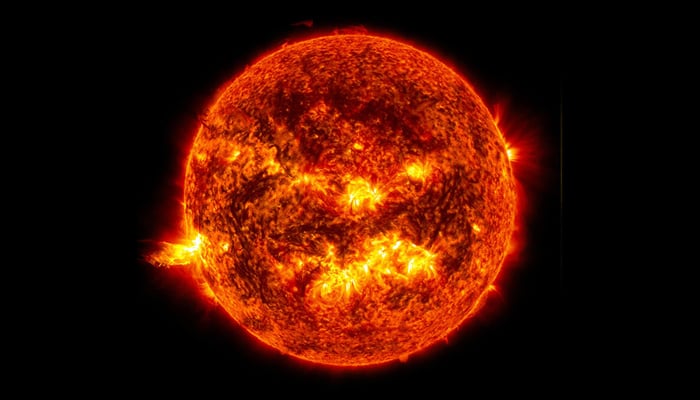Powerful magnetic explosion targeting sun's surface discovered
Latest measurements discover protons with energy levels about 1,000 times greater than expected
June 09, 2025

Nasa's Parker Solar Probe has made groundbreaking observations while making a daring dive through the sun’s atmosphere. It has directly recorded a powerful plasma explosion headed towards the sun's surface in unprecedented detail.
Parker's latest measurements discovered protons with energy levels about 1,000 times greater than expected and a plasma jet moving toward the sun rather than away from it, reported Live Science.
The probe was uniquely positioned between the sun and the source of these particles, enabling scientists to determine their origin with ease.
These findings suggest that the intricate complexity and strength of the sun’s magnetic field can accelerate charged particles to much higher speeds than would typically be anticipated based solely on the field’s strength.
The stunning plasma jet, directed toward the sun, is ignited by a captivating phenomenon known as "magnetic reconnection" within the sun's turbulent atmosphere.
This explosive event occurs when magnetic fields dramatically break apart and then reconnect, unleashing vast amounts of energy that was previously stored within the sun’s magnetic field. This energy acts as a powerful catalyst, accelerating the solar wind—a relentless stream of charged particles that the sun emits throughout the vast expanse of the solar system.
A deep understanding of magnetic reconnection is crucial for enhancing our predictions about space weather, a dynamic force influenced by the solar wind and other energetic outbursts emanating from our star.
Space weather plays a significant role in events that have shaped planetary atmospheres; it is believed to be a primary suspect in the stripping away of Mars' atmosphere, transforming it from a potentially habitable planet into the icy, desolate wasteland we observe today.
On Earth, the effects of space weather can be both dramatic and disruptive, triggering geomagnetic storms that lead to power outages, damaging satellites, interfering with radio and GPS signals, and even posing risks to astronauts navigating beyond our planet.
The sun's magnetic field is an extraordinary force—immensely powerful, intricately complex, and constantly shifting.
The Parker Solar Probe represents a groundbreaking mission, venturing into the sun's upper atmosphere, known as the corona, for the very first time. It is equipped to directly measure magnetic fields and particles within and around the corona with unparalleled precision, offering profound scientific insights into the heliosphere—the sun's expansive atmosphere that envelops the entire solar system in a massive, elongated bubble.









